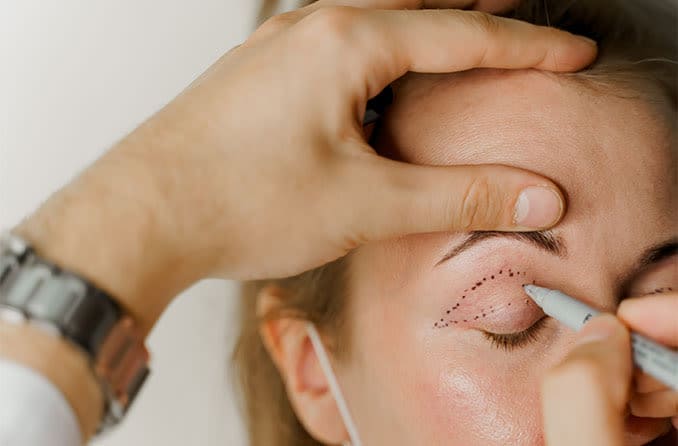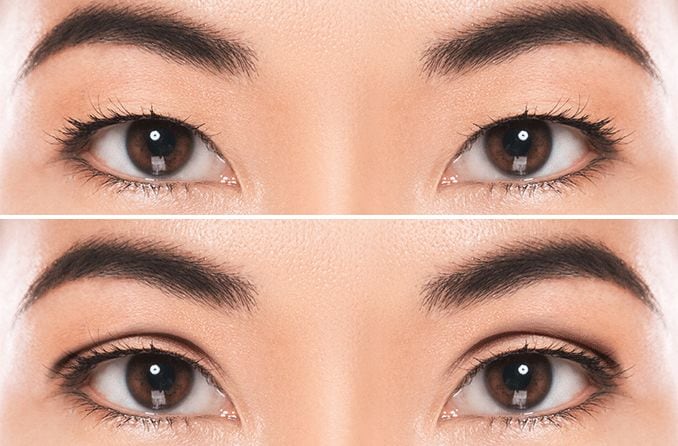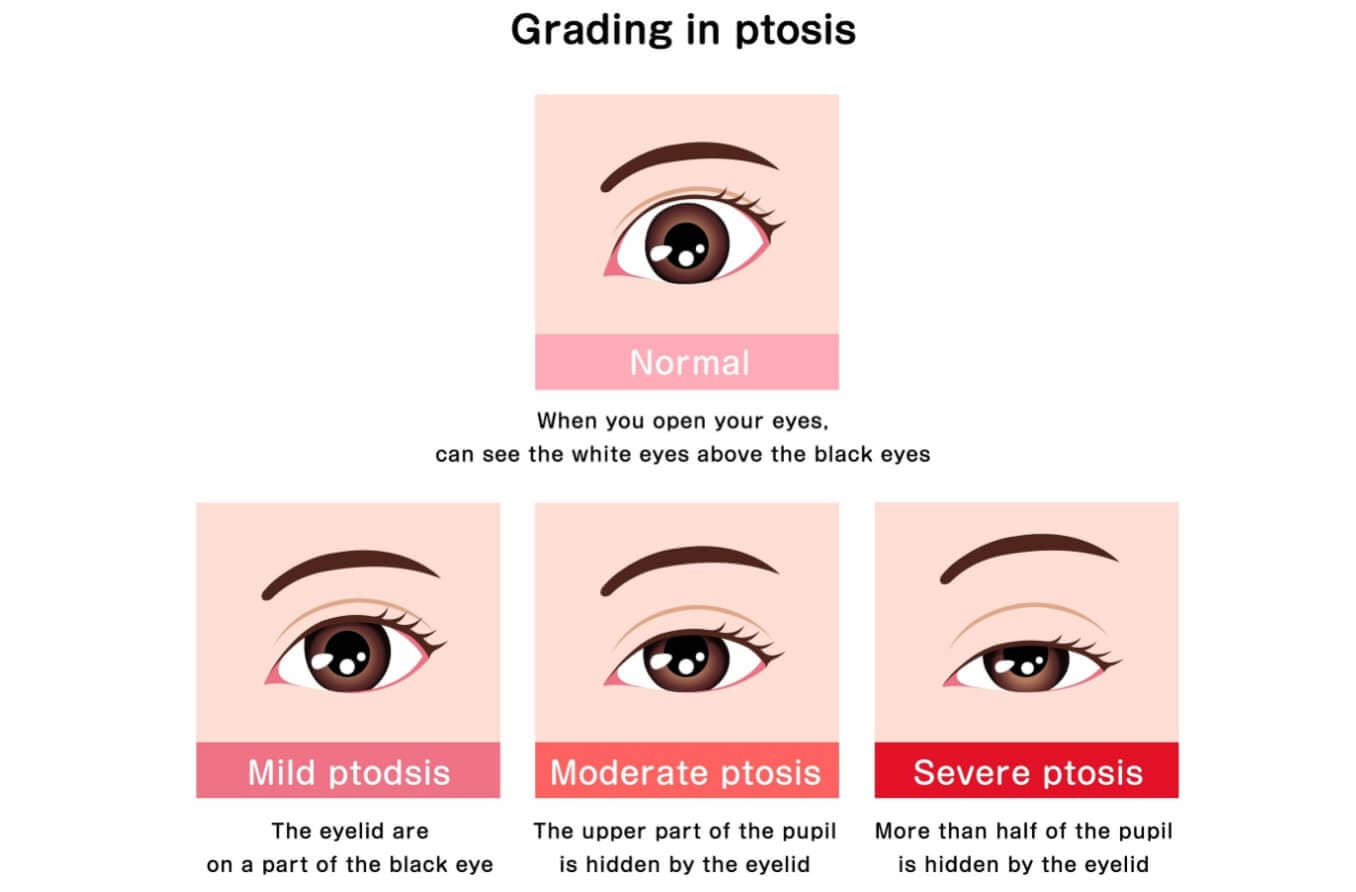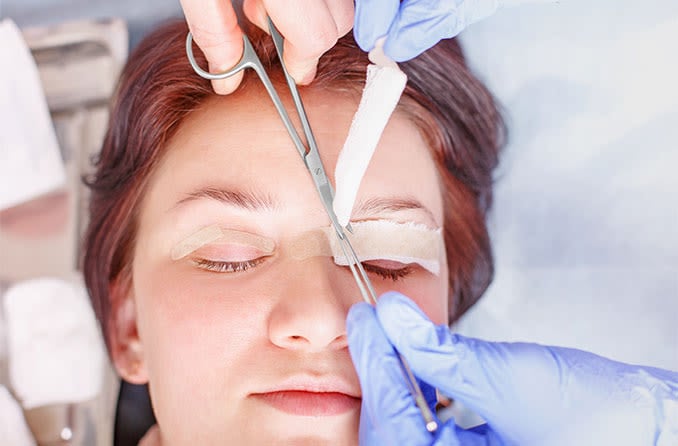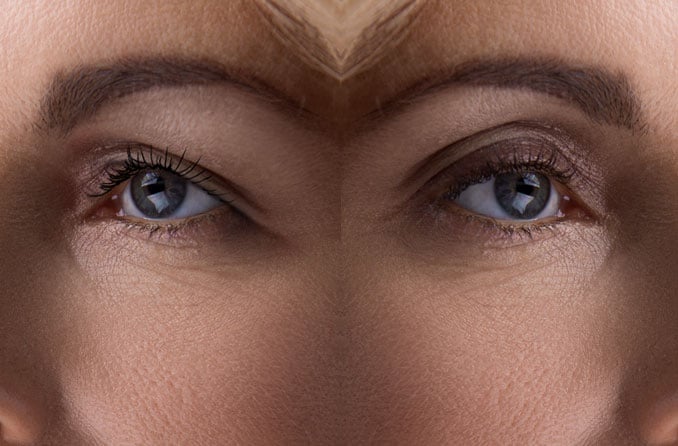When someone has ptosis, ptosis surgery is often the only method of gaining a more normal level of eyelid lift.
Most people who have mild ptosis symptoms do not require surgery. Surgery is usually reserved for patients whose vision is affected by droopy eyelids or those who choose to get it for cosmetic purposes.
In general, ptosis is corrected using one of three surgical procedures. An oculoplastic surgeon will base the decision on which type of ptosis you have, how severe it is and how your eyelid muscles are being affected.
When severe childhood ptosis or congenital ptosis is present, surgery is often recommended before eyelid drooping starts to affect their eyesight.
Two of the three methods of eyelid correction are classified as a blepharoplasty, and they involve strengthening the levator muscle responsible for keeping the upper eyelid open. For this reason, they’re also known as levator resection procedures. The third type targets an area around the eyebrows instead of the eyelids.
External ptosis surgery
External levator resection is the most common type of ptosis surgery. This form of blepharoplasty can also be called levator advancement.
“External” refers to the way a surgeon approaches the levator muscle. After they make an incision in the front of the eyelid skin, they shorten the levator muscle by reattaching it to the tarsus — the connective tissue inside the eyelid.
After post-operative recovery, the patient should be able to lift the affected eyelids to a much more normal height.
The external approach is often performed under sedation instead of general anesthesia, similar to what you might expect during a root canal or wisdom teeth removal.
SEE RELATED: UPNEEQ eye drops for ptosis
Internal ptosis surgery
Internal levator resection surgery can be similar to external surgery but with a different way of accessing the eyelid muscles. Instead of operating through the top-side eyelid skin, the surgeon shortens the muscle from the underside of the eyelid.
During internal ptosis surgery, the surgeon will target the levator muscle or Mueller’s muscle, which is attached to the levator. Which muscle is selected depends on the patient’s individual case of ptosis. Mueller’s muscle is often chosen when the amount of drooping is more moderate and doesn’t require quite as much correction.
Like the external approach, the internal approach can also be performed under sedation, but the surgeon may opt for general anesthesia instead.
SEE RELATED: Causes of ptosis
Frontalis suspension surgery
A third option for ptosis surgery may be recommended when the eyelid’s muscle function is severely weakened.
During frontalis suspension, the levator muscle is not targeted. Instead, a tiny silicone sling is used to connect the eyelid to the muscle above the eyebrows called the frontalis muscle. The goal of frontalis suspension is not to improve eyelid muscle function, but instead to allow the patient to lift their eyelid(s) with the muscles in their forehead.
General anesthesia is almost always used due to the increased complexity of the procedure.
SEE RELATED: A praxia eyelid opening
Ptosis surgery recovery time
After surgery, you can usually go back to normal activities within 1-2 weeks, according to the American Academy of Ophthalmology (AAO). Some bruising is normal up to two weeks after the procedure, and some swelling is normal for several weeks.
Ptosis surgery is ultimately meant to be permanent. However, muscles in the eyelid are very delicate, so it’s easy for surgeons to correct eyelid drooping too much or too little. One study reported that, after six months of recovery, 19% of patients experienced some degree of overcorrection, while 7% reported undercorrection.
Because of the complexity of ptosis correction, some patients need more treatment in the future. Follow-up treatment can be as simple as regularly massaging the area, but in some cases, additional surgery is needed.
Is ptosis surgery covered by health insurance?
While every health insurance plan varies, there are two rules of thumb when it comes to ptosis correction.
If eyelid drooping affects your vision, or could affect it without treatment, then ptosis surgery will likely be covered by health insurance. If your condition is strictly cosmetic and doesn’t otherwise affect your overall health, it’s unlikely that your health insurance provider will cover the cost of the procedure.
Always check with your provider beforehand to make sure you’re covered.
With health insurance, the cost of ptosis surgery will rely on several factors, including your coverage, deductible and out-of-pocket maximum, in addition to facility, surgeon and anesthesiologist charges. Without insurance coverage, your cost will depend wholly on facility and doctor charges. These can be difficult to get a hold of before the actual procedure.
Since surgery costs in the U.S. can rise into the tens of thousands of dollars, it’s important to consult with your insurance provider, facility and any doctors who will be involved in your operation. This will help you avoid any surprise charges after surgery.
Consult with an eye doctor
If you experience any new eyelid drooping, make sure to schedule an appointment with an eye doctor. Droopy eyelids can be harmless, but they can also signal a more serious condition. If you’re experiencing the symptoms of stroke, seek medical treatment right away.
You should also always talk to an eye doctor before trying any ptosis home remedies or other ptosis treatments.
If you’ve already been diagnosed with ptosis, an ophthalmologist or oculoplastic surgeon will be able to assess your condition and help you decide whether surgery is the best option for you.
